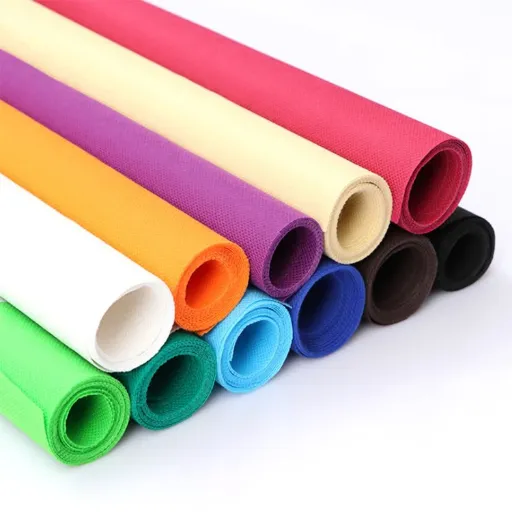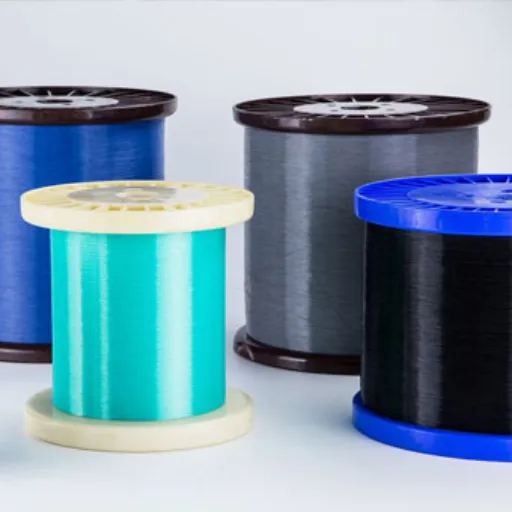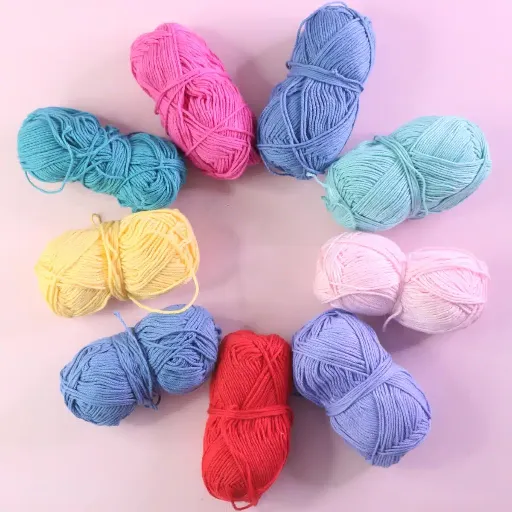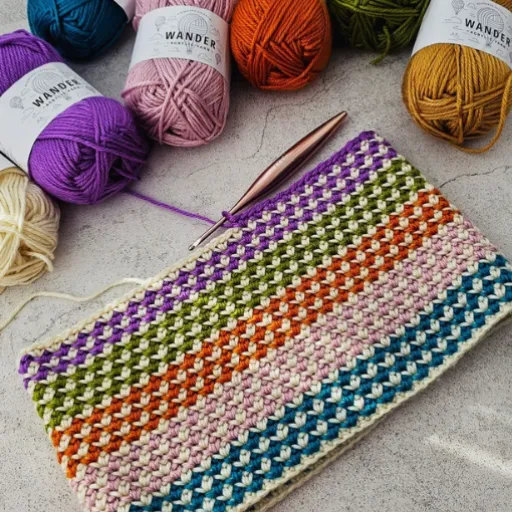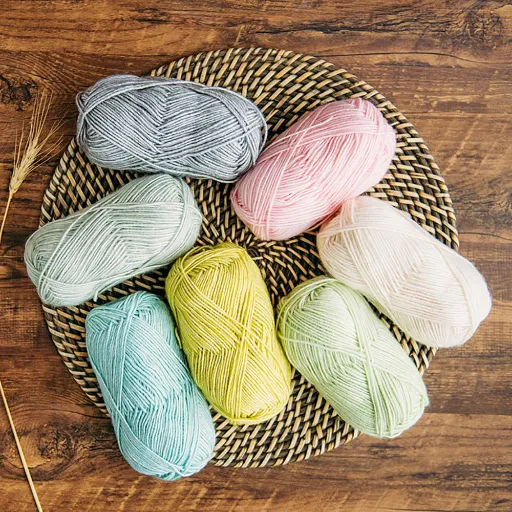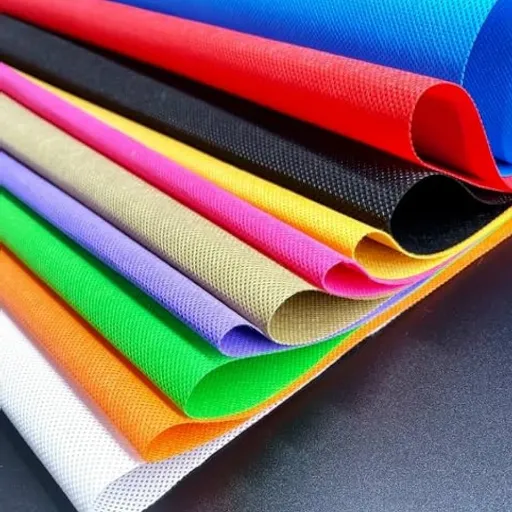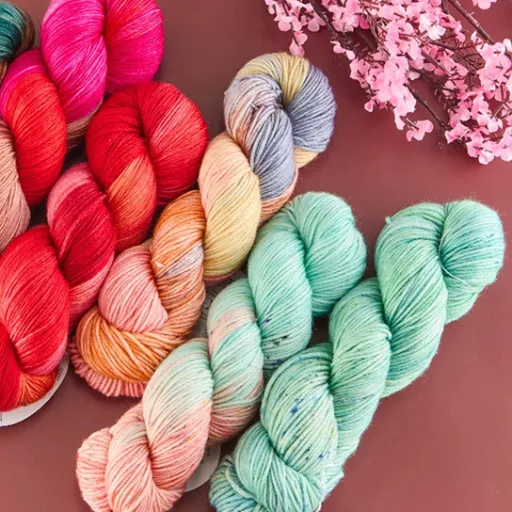Choosing between cotton and acrylic can be thrilling and daunting when picking the correct type of yarn for crocheting. The thing is, every type of yarn has its unique properties which can notably change the feel, quality, and purpose of the crocheted item. Irrespective of whether you are working on some snuggly blankets, chic summer tops, or hard-wearing home decor, it is important to see the range of cotton and acrylic yarn that is available around. In this article, we will unravel the main differences between the two, list what is good and bad in each, and help you to figure out which yarn to use for your future creative work.
Understanding Yarn Types
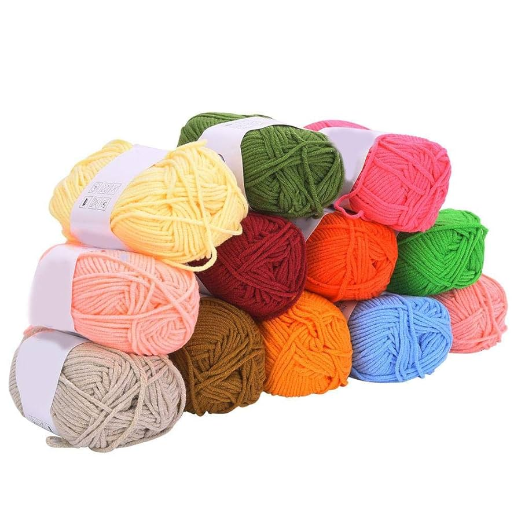
Cotton yarn is made from organic material, bringing additional benefits such as excellent breathability, softness, and long life. Moreover, it is capable of holding liquids in very high quantities which makes it the top choice for light summer dresses, dishcloths which are not only useful in the kitchen but also in the bathroom as well. In addition, cotton fabric does not pill or elongate easily so the produced materials last longer. But cotton fabrics have been observed to contain no elasticity, a feature that poses a challenge when trying to accomplish elasticized projects.
Acrylic yarn is a very popular alternative, being a man-made substance which is rather inexpensive, practical, and available in a wider diversity of colors. Wearing it is further useful in that it is able to acquire perspective resistance, care in cleaning is not an issue since it is capable of being washed in the machine, and it dries very fast. It is also a great insulating material, thus being suitable for such things as throws, scarves, etc. Usually, it can shed and is not as breathable as natural fibers.
What is Acrylic Yarn?
Acrylic yarn is made up of a synthetic fiber of polymerized acrylonitrile monomers, which are created through polymerization. This material is created to have the same properties of wool, such as warmth and strength, without the high cost of wool. Acrylic yarn is known for not fading fast and can be washed countless times without wearing out. It is also lightweight and will not provoke any allergies, thus most people use it instead of wool.
Acrylic yarn is extremely flexible and is commonly found in different product lines of clothing, like clothing articles and home furnishings. Nevertheless, the drawback of using acrylic yarn is the fact that it is petroleum-based, thus not appropriate for hot or warm climates, as the fabrics do not allow ventilation. Moreover, even though production has extended the range of softness for acrylic yarn, it may still fall short of the luxury feel produced by a high-grade natural alternative. In essence, acrylic yarn falls in between saving costs and enabling production in a way that is practical, and that is why both learners and experienced artisans often use it.
What is Cotton Yarn?
Cotton yarn is a natural kind of fiber derived from the cotton plant’s seeds, which belong to the genus Gossypium, a plant species that produces seeds. Renowned for its beauty, softness, and the air of passiveness provided by the plant’s yarn. The cotton yarn has been extensively exploited in the manufacturing of textiles for trade as well as in for mere hobby purposes. As its weaving structure allows it to efficiently remove the sweat, this creates a good base for garments typical to regions with hot climates or movement. There are different classes of cotton yarns generally cited from the very fine threads used for sewing cloth to the much bigger and firmer ones employed in making clothes, for example, clothing, accessories, and even some home-based items.
Further processing developments, like for instance mercerization, have also improved these features, repairing the shade of the yarn and increasing its brightness too. Organically produced cotton and cottons commonly known as eco cotton yarns are now gradually raising interest after being accepted in society. Despite it being easily handled and cleaned, especially, there is considerable shrinkage and wrinkling of cotton yarn materials as opposed to the artificial yams, in addition, its fibers are easily destroyed by water. Albeit the weaknesses as mentioned earlier, cotton still remains unequivocally one of the most sought-after and highly esteemed fibres in the industry.
Acrylic vs Cotton Yarn: Key Differences
|
Parameter |
Acrylic Yarn |
Cotton Yarn |
|---|---|---|
|
Fiber Origin |
Synthetic, man-made |
Natural, plant-based |
|
Durability |
Highly durable, resists wear and tear |
Durable but prone to shrinking |
|
Moisture Resistance |
Water-resistant, dries quickly |
Absorbs moisture, dries slowly |
|
Softness |
Typically less soft |
Naturally soft |
|
Breathability |
Low breathability |
High breathability |
|
Weight |
Lightweight |
Heavier |
|
Texture |
Can feel plasticky |
Smooth and soft |
|
Heat Retention |
Excellent heat retention |
Moderate heat retention |
|
Ease of Care |
Easy to clean, often machine washable |
Requires gentle washing |
|
Environmental Impact |
High environmental impact during production |
More eco-friendly, especially organic |
|
Cost |
Generally affordable |
Can be more expensive |
|
Color Variety |
Extensive color options available |
Limited by natural dye absorption |
|
Hypoallergenic |
May cause irritation for sensitive skins |
Hypoallergenic, skin-friendly |
|
Pilling |
Prone to pilling over time |
Minimal pilling |
|
Longevity |
Retains shape over time |
May degrade under certain conditions |
Choosing the Right Yarn for Your Project
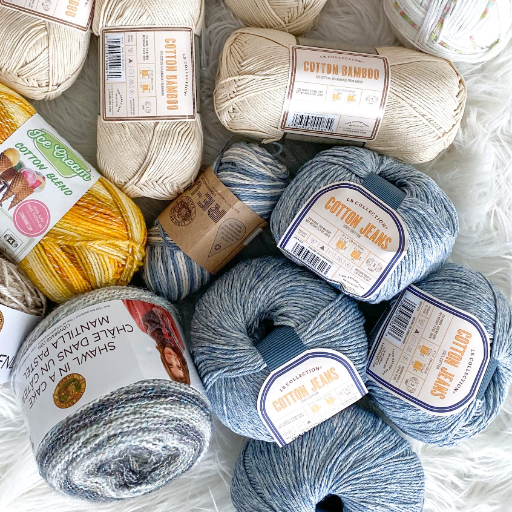
- Fiber Type
Center interest on the use of a fiber. For example, while synthetic fibers like acrylic offer increased durability and affordability, natural fibers such as cotton or wool offer heightened softness and breathability.
- Weight and Gauge
Also, several of factors affect the final design of the item knitted, which includes; the thickness of the yarn used as it determines the size of the stitches that can be knit and how their forms will be represented. And don’t look like a dense red towel here; otherwise, we won’t see any of the laced patterns.
- Texture and Feel
Make sure that all the thread that have been dyed in the same color is purchased altogether so that none of these threads ever run out in joints any color distinction
- Color and Dye Lot
Dye lots are essential in every project to stitch. If it should be chosen to stitching something, then the colors preferred shall go harmonious with the project’s goal.
- Care Requirements
Look at the fiber’s endurance. Everyday use might be washed in the washing machine whereas more complex ones like those made of fiber need to be handle internship.
- Budget
Yarn Weight and Its Impact on Your Crochet Project
Whether it is premium or low-priced, woolen yarns’ weight determines how the crochet will be finished. The concept of yarn weight in this sense, sticking to standards, one can find that lace, fingering, worsted, bulky, and other standards of weight also determine the thickness of the yarn and its compatibility with the components, such as hook sizes. Laces and fingering and finer, or lighter weights, respectively, allow making laces through short rows and motifs to the sleeves, etc. Slimmer worsted or bulky weights, in turn, have firm or full coverage suitable for objects that will be used for very long times, like afghans or jumpers. It is clear that weight determines more than just how the final object appears: so do the stitches chosen to use and the gauge to enable an object to fit as it is supposed to. To provide optimal results, the manufacturer has created simplified charts of the most common yarn weights and the appropriate hook sizes, bearing in mind the variety of stitches that can be used. The same applies to the mass of yarn as also affects a particular stitch type – for example, a heavier yarn brings out the cabled stitches more than a finer one in a lot of instances; on the other hand, the ancient art of lace is best executed using the thinnest threads.
Natural Fiber Yarn vs Synthetic Yarn
|
Parameter |
Natural Fiber Yarn |
Synthetic Yarn |
|---|---|---|
|
Source |
Derived from plants/animals |
Manufactured from petrochemicals |
|
Texture |
Soft, breathable |
Smooth, less breathable |
|
Durability |
Less resistant to wear |
Highly durable and strong |
|
Moisture Absorption |
Excellent at absorbing moisture |
Low moisture absorption |
|
Stretchability |
Elastic, returns to shape slowly |
Less elastic, retains shape well |
|
Care Instructions |
Requires delicate handling |
Usually machine washable |
|
Environmental Impact |
Biodegradable, eco-friendly |
Non-biodegradable, harmful to environment |
|
Cost |
Generally more expensive |
More affordable |
|
Dye Retention |
Colors may fade over time |
Retains vibrant colors longer |
|
Applications |
Ideal for luxury and artisan projects |
Common for budget garments/projects |
Pros and Cons of Acrylic and Cotton Yarn
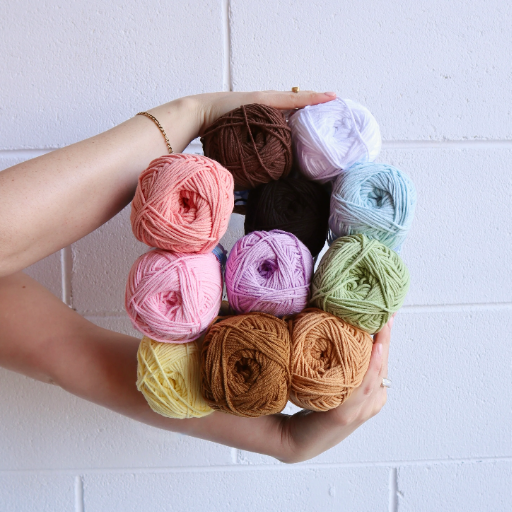
Pros of Acrylic Yarn:
- Simple and affordable for the vast majority of applications.
- Context-sensitive, enabling the sustainability of intense colors in the long run.
- Self-cleaning and maintenance, characterized by the ease of use for many times a greater number of items.
- The weight factor is usually a concern in the making of cold-weather items or accessories.
Cons of Acrylic Yarn:
- 1Non-biodegradable, contributing to environmental concerns.
- 1Less breathable than natural fibers, which may cause discomfort in warm climates.
- It can seem rigid or harsh as compared to natural fabrics.
Pros of Cotton Yarn:
- Eco-friendly because it wears out over time, and nature-friendly as it is easy to dispose of once worn out.
- Feels good on the skin, is warm, washes well, and is easy to knit and crochet in the summer months.
- Something which is worn directly feels right after touching it, which is why it is so popular among users.
- The ability to hold more is preferred for products like dishcloths, hand towels, etc.
Cons of Cotton Yarn:
- In comparison to the acrylic ones, these are more expensive on average.
- Synthetic fibers are little elastic which might imply that it will be necessary to maintain rigid shapes when it comes to using such fibers.
- Concerning colored clothes, they can lose color with frequent washing and exposure to the sun.
Benefits of Using Acrylic Yarn
- Cost-Effective and Widely Available
The appearance and feel of acrylic yarn may vary depending on the budget of the costumer and the price of the fibers involved, for instance, it is a cost effective choice for those working on big projects, trying to save on resources. The beauty of polyester is that it is made up of engineered components hence it is found in various sizes and colors.
- Durability and Longevity
To a great extent, acrylic yarn is resistant to damage and wear and therefore most suitable for practical projects and things like bedding, jumpers and rugs which are presumably meant to be utilized on a daily basis. Additionally, this aspect of acrylic means that there is no surface further aggregation which would result in the object losing its quality.
- Lightweight with High Volume
Despite its plastic properties, acrylic has a buttery feel which lacks weight, allowing it to be used in a similar way to all heavy, bulky items without burdening them by their own weight.
- Highly Resistant to Moisture and Stains
Acrylic yarn does not retain water and is resists the formation of stains, hence can be used with items that are likely to be spilled on or left outdoors and use it so that it can be cleaned of the stools very quickly.
- Wide Range of Color Options
Advantages of Cotton Yarn
- Breathability and Comfort
A great saviour, cotton yarn is a highly breathable material, and this factor makes it suitable for usage in clothes, especially in hot areas. It generally shows that it has the ability to wick away any sweat and warm up/cool the human body. In fact, statistics revealed that cotton has tremendous water absorbability; as much as it can take in as much as 27 times its weight, it still does not lose its structure, keeping the person safe from the weather elements.
- Softness and Skin-Friendliness
When considering that beautiful, soft, and focused on texture, cotton can be used instead of synthetic fibers. It is gentle on the skin type, most especially for people using cotton baby sweaters. It is more delicate and produces less, causing skin irritations compared to some synthetic yarns that contain toxic residues.
- Durability and Washability
Cotton yarn is a strong and durable material that withstands tension and cleaning. It is resistant to pilling and does not lose its ability to knit over time, as most materials do. Therefore, machinable cotton can be a savior, especially when producing things that often need to be washed, such as washcloths, terry towels, or clothes for around-the-house wear.
- Sustainability and Biodegradability
Apart from this, being a natural fibre, cotton is eco-friendly since it decomposes and is essentially renewable. In the same spirit, manufacturers have come up with organic cotton yarn in a bid to reduce even this farming, by using and taking in less harmful substances like pesticides and fertilizers.
- Versatility for Various Projects
One of the advantages of cotton yarn is its easy handling because the fibers are always spun out in counts. It is perfect for making light weight tops, dresses or market totes or anything else that can benefit from and needs general strength and weight of the material. The threads enable well-done crocheting and knitting that shows each pattern and individual features quite clearly.
Disadvantages of Each Yarn Type
Disadvantages of Cotton Yarn:
- Lack of Elasticity
Unlike some natural fibers, cotton yarn does not have a high degree of stretch, which can make it difficult to work with. In such cases, it might turn out that the products will not be completely smooth fitting and that they will be fairly tarnished.
- Weight in Finished Projects
Cotton yarn is heavy due to its thickness, particularly when it is made into large items like blankets or clothing. This is made worse when the material is able to absorb sweat, as the fluid will add up to one or more quarters of the actual weight of the material.
- Susceptibility to Moisture
Cotton can take a lot of beating, but the flip side of the coin is that cotton also soaks up a lot of liquid. A bit prolonged exposure of the fabric to such conditions can also lead to mildew or fungus attacks on the fabric.
- Tendency to Stretch
Cotton yarn also might get loose and lose shape over time since cotton yarn tends to stretch especially upon being subjected to forces. This is most critical with clothes that are meant to fit exactly to the wearer.
Disadvantages of Acrylic Yarn:
- Environmental Impact
Extracted from organic chemical synthesis, acrylic yarn is processed from crude oil, which, of course, is not a renewable resource, and is a more dangerous pollutant to the environment. In addition, microplastics liberated with acrylic fabric when laundered may find their way into aquatic systems, thus possibly endangering the wildlife therein.
- Low Breathability
It is soft to the touch and appropriate for making garments, but it is inferior to natural fibers in terms of wicking and breathing activity. Therefore, acrylic made clothing may be conducive and distinctly uncomfortable during hot or humid weather since it traps the heat.
- Flammability
Owing to their structure, acrylic materials react at a fast pace to temperatures and are easy to set on fire but at the same time, do not decompose because of such factors. They cannot be used in certain instruments because they may melt.
- Skin Sensitivity
Acrylic yarn is an appropriate choice for every individual except some with sensitive skin because of the fact that the material is produced. In most cases, it can be cold or rough to the touch that is to say more so if the quality is lower.
Best Uses for Each Yarn Type
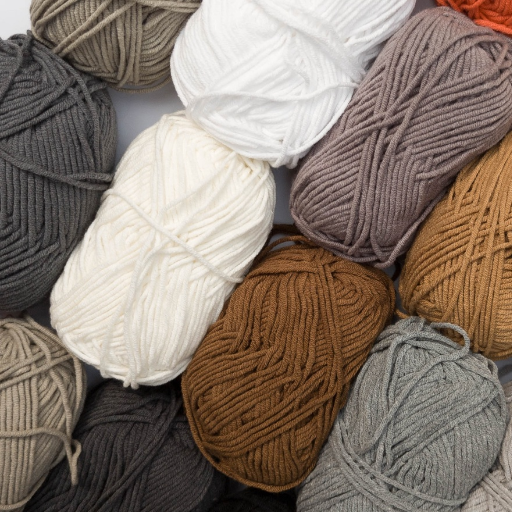
Best Uses for Cotton Yarn:
- Garments for Warm Climates
What makes cotton so good in terms of utilizing it for sewing clothes for hot season such as sleeveless, full-sleeved, and summery dresses is the fact that it does not stick the body hence it is breathable. The clothes are also cool in hot temperatures and moist air as the cotton provides the athermothermic quality of the subject.
- Baby Products
Cotton yarn is gentle and skin friendly. The consideration has many such qualities and is thus suitable for delicate or infantile articles such as beddings, clothing and even wraps or any other accessory to be put on new skins.
- Household Items
Cotton yarn is extensively used in making domestic objects such as, dishcloths, face cloths, tea towels, among others, as it is a highly absorbent and washable type of yarn, the fabric is also used in those objects. Such specific pieces of household items are made with cotton as cotton possess the fibers strong enough to withstand tough handling, washing and rewash cycles.
- Crocheted and Knitted Bags
To better describe the advantages of cotton, one could say that its relatively light weight but strength make it suitable for purposes such as the making of tote bags, market bags, purses and the like. Furthermore, because of these qualities and their workmanship, as written elsewhere, for heavy materials, cotton keeps its shape well.
Best Uses for Acrylic Yarn:
- Winter Clothing and Accessories
Acrylic yarn is excellent when it comes to retaining heat, and so it is absolutely perfect for warm clothes such as sweaters, scarves, hats, and mittens because it does not add a lot of weight to the warmer. It creates a good layer that preserves heat so that one doesn’t feel cold while wearing clothes.
- Blankets and Afghans
Acrylic yarn which is pocket-friendly is often used for quite big projects such as circular blankets, huge afghans and throws because it can be created in many colors and textures which do not have the above-mentioned weaving problems. Apart from that it doesn’t form balling and it can be extended and used as much as any other article.
- Craft Projects
This is why acrylic is perfect for things such as doodling pieces, also known as amigurumi, or decorations for the holidays located on top of any place, as well as acrylic toys and textural studies in bright colors.
- Beginner Projects
Acrylic Yarn for Knitting and Crochet
One of the reasons why acrylic yarn started being used in the center of crochet and knitted garments is its strength, affordability, and availability of a wide range of colors and textures. Acrylic fibers are also used for making yarn today, in which the fibers can be pliable and not stiff or rough, soft like wool or cotton. Combining all these features, acrylic yarn is loved in case you make items for everyday usage, such as scarves, sweaters, and covers, since it does not wear out so fast.
Moreover, it is quite appropriate to use the acrylic yarn since some items can be washed more frequently. Unllike many other fibers such as wool or cotton, Acrylic is more wash and wear type of fiber and retains colour and shape over time. It is also non-irritating , making it perfect for use in baby products including clothing or bedding, especially in situations where there are allergies.
Cotton Yarn for Summer Projects
Summer projects may benefit most from cotton yarn for its breathable properties and ability to absorb moisture. It is obtained from the cotton plant fibers and is airy and moisture-absorbent, hence ideal for making clothing to cool the body down, especially in hot weather. It is smooth and has no knots or kinks, meaning more intricate patterns in designs like tank tops, stoles, or summer doilies can be developed. Further, most cotton yarn is machine-washable, considering it dries quickly, hence offering both functionality and capability. Where average cotton yarns are mostly in use, other types are increasingly being popularized, such as cotton blends (e.g., bamboo or linen blends), to provide better support and softer drape to projects.
Purchasing Yarn: Tips and Recommendations
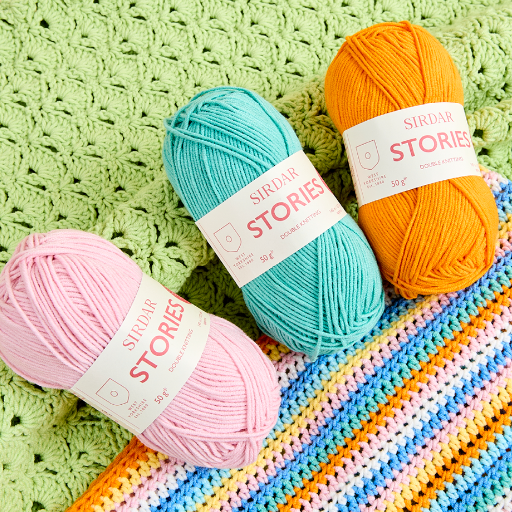
- Fiber Content: Indicate the best kind of fiber to use on your project-cotton for lightness, wool for warmth, or a combination of both. In other words, let all the properties and the reason for each of them in relation to the end use of the targeted article reset all that may follow.
- Yarn Weight: Look at the yarn weight written in the pattern, such as DK or worsted. It is necessary to take into consideration the weight of the yarn which is to be used in order to match the gauge and bring about the drape as it is desired.
- Quantity Needed: Calculate the amount of yarn necessary for the project by looking at the recommended yardage in the pattern or using a yarn estimator. Always take extra volumes with you so that any inconsistencies in dye lots do not affect the results.
- Dye Lot: Ensure that all the balls are of the same dye lot to make the final artefact color consistent with no perceptible variations.
- Texture and Feel: Evaluate the comfort of the yarn, particularly when developing pieces, especially clothing or things that will come into contact with the skin.
- Washability: Examine the care labels. Yarns which can be washed by machine would be a perfect choice especially for regular washed or used products like baby blankets.
After consideration of above-mentioned factors, you will be able to choose the yarn best suited for the project and get the ideal finesse that you aspire.
Where to Buy Quality Yarn
When in need of good quality yarns, it is important to only use reliable search engines that cater to a range of different projects. Local craft stores and specialty shops for knitting laces are some of the best places to go and assess the samples mentally, as they have more or less unique materials that are not found in huge supermarket chains. In addition, it is also essential to note that there are quality yarns that can be found on online platforms. Net services such as WEBSꞌ come with a large number of fibers, colors, and weights, with user reviews and product spec guides, which are very helpful to customers who want to put in an order. Several websites also provide international shipping facilities for those needing access to quality materials based far away. Subscription services, for instance, YarnBox, have come up with another innovative way of providing high-quality yarn where they send it over to dedicated knitters or crocheters on demand. And finally, Etsy does not compromise on unique blends of colors, styles, or patterns and lets the vendors create such yarns as per their intention and customers’ needs. By examining the yarn sources with respect to the assortment of goods offered on the market, the target client’s opinion, and the manufacturer’s expansion, you will definitely determine the suppliers that are strategic in terms of the supply of suitable services and the supply of a high-quality product.
How to Assess Yarn Quality
Regarding the evaluation of yarn quality, certain elements such as fiber content, texture, strength, and lightfastness have to be looked into. Well-made yarns promote consistent fiber blending without any slubs, which can have a negative impact on the look and expects of the final product. For example, merino wool and alpaca are such soft and warming natural materials, while acrylic and other synthetic fibers may be opted for due to cost and maintenance reasons.
Reference Sources
-
Honouring M.E. Crochet Blog: Cotton provides crisp stitch definition and is heavier, making it suitable for structured projects like bags or summer wear. Acrylic is stretchier, lighter, and better for items requiring frequent washing, like kids’ clothes. The choice depends on the project and personal preference.
-
Zhinkxc Blog: Cotton is eco-friendly, breathable, and hypoallergenic, ideal for sensitive skin and summer items. Acrylic is durable, vibrant, and cost-effective, making it suitable for blankets and winter garments. The article also highlights environmental impacts and care instructions for both yarns.
Frequently Asked Questions (FAQs)
Q: What are the main differences between cotton and acrylic yarn?
A: Cotton yarn is made from natural fibers, making it breathable and absorbent, which is great for summer projects. Acrylic yarn, on the other hand, is synthetic and often more affordable, offering a variety of colors and textures. Cotton tends to have a more matte finish and holds its shape well, while acrylic can be softer and more elastic. This means that if you’re looking for durability and a range of vibrant colors, acrylic might be your best bet. Conversely, if you prioritize comfort and natural materials, cotton could be the right choice for your crochet work.
Q: Which yarn is better for beginners: cotton or acrylic?
A: Acrylic yarn is generally recommended for beginners due to its affordability and wide availability. It’s easier to work with, as it typically has a bit more stretch, which can help in maintaining tension during crochet. Cotton yarn can be more challenging because it lacks stretch and can split easily, making it less forgiving for new crocheters. However, once you gain some experience, experimenting with cotton can yield beautiful results, especially for items like dishcloths or summer garments. Ultimately, starting with acrylic can build your skills before transitioning to cotton.
Q: Can I use cotton yarn for warm projects?
A: Yes, you can use cotton yarn for warm projects, but it may not provide the same level of insulation as acrylic or wool. Cotton is breathable, which makes it suitable for lighter garments or accessories that need to be comfortable in warmer weather. For colder climates, consider blending cotton with other fibers to enhance warmth. You might also explore cotton blends that incorporate acrylic or wool for added warmth while retaining the benefits of cotton. Choosing a thicker cotton yarn can also help in creating cozier items.
Q: How does the care differ for cotton and acrylic yarn?
A: Cotton yarn is typically machine washable and can withstand higher temperatures, making it easier to clean. However, it can shrink if not washed properly, so it’s essential to follow care instructions closely. Acrylic yarn is also machine washable and tends to resist stains better, which can be particularly advantageous for everyday items. Both yarns can be tumble dried, but acrylic can be sensitive to high heat, so it’s best to use low settings. Understanding care requirements can enhance the longevity of your crochet projects, regardless of the yarn type.
Q: Is cotton yarn more expensive than acrylic?
A: Generally, cotton yarn tends to be more expensive than acrylic due to the natural fiber sourcing and production processes involved. However, prices can vary widely based on the brand, quality, and dyeing techniques used. While acrylic yarn is often seen as a budget-friendly option, there are premium acrylics available that can also be costly. When budgeting for your crochet projects, consider the type of items you plan to make and how often they will be used, as this can influence your choice of yarn. Investing in quality yarn, whether cotton or acrylic, can enhance your finished products.








